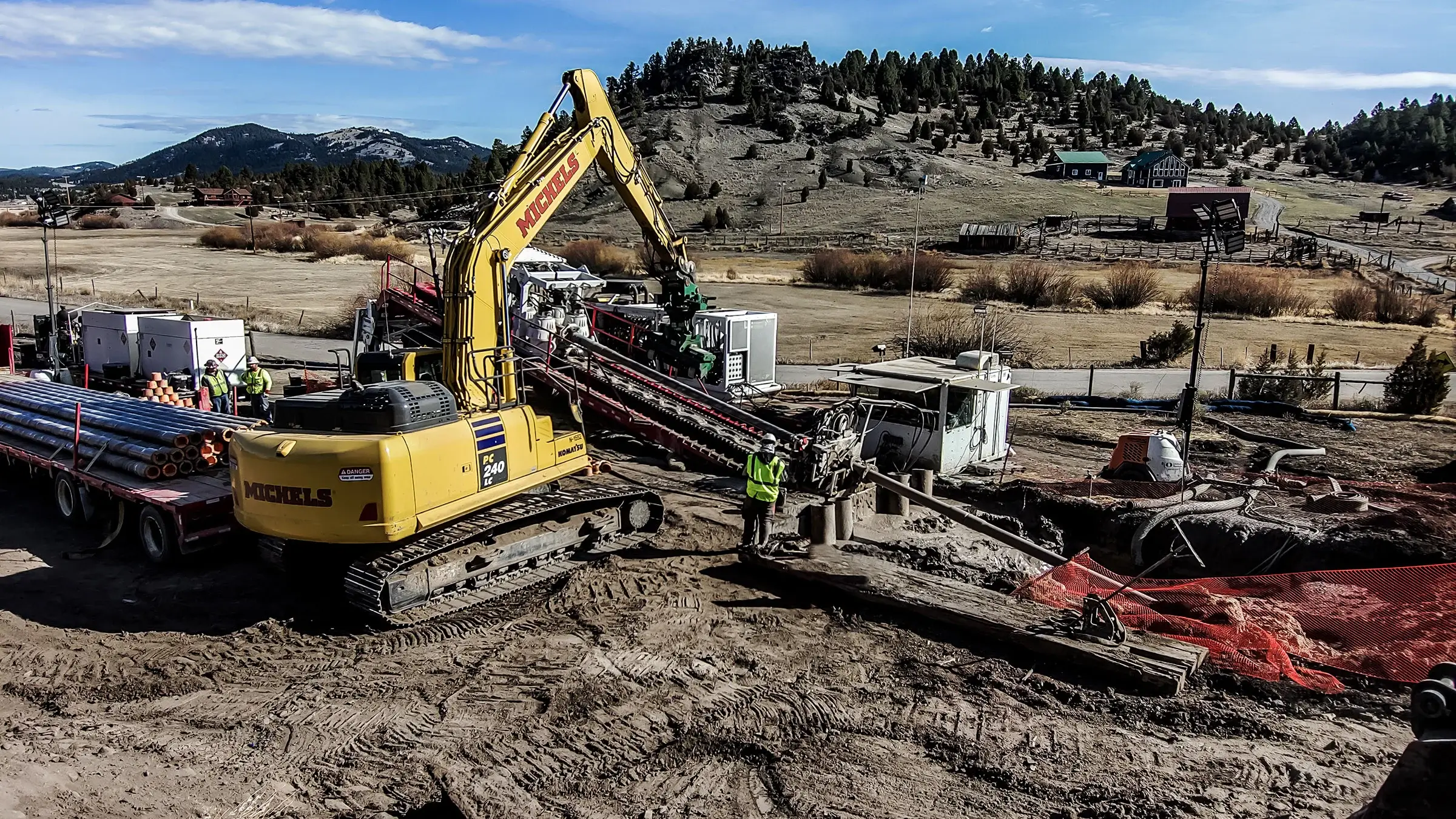Groundbreaking Projects: Achievements in Horizontal Directional Methods

Horizontal Directional Drilling, or Horizontal Directional Drilling, represents revolutionizing the arena of utilities installation and infrastructure advancement. This cutting-edge technique allows for the installation of subsurface pipelines, cables, and services bypassing traditional trenching, offering a more efficient and eco-friendly solution. As urban areas continue to expand and demand for new infrastructure increases, HDD is positioned as a pioneering technology that reduces surface disruption while guaranteeing the integrity of key services.
In this article, we will examine various case studies and the significant advantages of HDD across diverse fields. From fiber optic deployments to pipeline installations, we will discuss how this method is changing the way infrastructure is installed, particularly in challenging environments. We will also take a closer look at the equipment involved, the necessity of pre-project planning, and the upcoming developments shaping this promising field. Whether Horizontal Directional Drilling Belfast Northern Ireland are a developer, service provider, or simply interested about the current innovations in non-trench technology, this detailed overview will provide key insights into the world of Horizontal Directional Drilling.
Comprehending Horizontal Directional Boring
Horizontal Directional Drilling, or Horizontal Directional Drilling, is a bore-free technology that facilitates the setup of subsurface utilities with limited surface interference. The process involves bore a test hole along a set path and incrementally enlarging it to facilitate the installation of pipes or cables. This technique is particularly beneficial in metropolitan environments where surface interference can lead to substantial inconveniences.
The drilling process starts with site assessment and preparation, where engineering conditions are analyzed to establish the ideal drilling path. Once the strategy is in place, specialized drilling equipment is used to produce a borehole that maintains the assigned trajectory. This technique is particularly efficient for navigating rivers, roads, and other hindrances without the need for extensive excavation.
One of the key aspects of HDD is its competence to work in multiple soil conditions, which allows it to adjust to different environments. The technology not only minimizes the time and financial outlay associated with classic trenching but also limits the environmental impact, making it a favored choice for utility setups in vulnerable areas. As infrastructure requirements continue to grow, HDD stands out as a top solution for effective and sustainable installation practices.
Merits and Uses of HDD
Horizontal Directional Drilling (Horizontal Directional Drilling) offers numerous advantages for infrastructure installation, making it a preferred choice for many infrastructure projects. One key benefit is its ability to minimize ground disturbance. Unlike traditional digging methods, HDD allows for the installation of services beneath the ground without the requirement of extensive excavation. This not only limits the consequences on current landscapes but also reduces the need for repair work after installation. Additionally, HDD can work around existing structures and utilities, providing a adaptable approach in highly populated areas.
Another significant benefit of HDD is the productivity it brings to completion times. By cutting down on the time taken on land rehabilitation and reducing traffic interruptions, HDD projects can be completed faster than standard practices. The ability to excavate at various angles and depths also opens up new possibilities for constructing utilities in challenging environments, such as spanning rivers or beneath roads. This flexibility makes HDD an advantageous option for a variety of implementations, including telecom, hydration systems, and wastewater systems.
Moreover, HDD plays a key role in meeting the growing demands of sustainable energy infrastructure. As the drive for renewable energy solutions increases, HDD is more and more used to install pipelines for geothermal energy, solar energy facilities, and turbine fields. Its minimal-impact methodology aligns well with environmental preservation, making it a favorable option in at-risk ecological areas. The ongoing advancements in HDD technology, combined with its proven benefits, position it as a premier solution for upcoming infrastructure projects.
Obstacles and Innovations in HDD

In spite of the many advantages of Horizontal Directional Drilling, numerous challenges can hinder project success. One of the primary issues involves navigating complex geological conditions. Soil types, rock formations, and unforeseen underground obstacles can pose substantial risks during drilling. Moreover, ensuring the correct trajectory while minimizing environmental disruption demands sophisticated planning and continuous monitoring, which can add complexity to the process.
Improvements in technology are addressing these challenges head-on. The integration of sophisticated software and GPS systems boosts drilling accuracy, enabling operators to more effectively navigate challenging terrains and align utility installations accurately. New drilling fluids and equipment innovations, such as rotary steerable systems, enable more productive drilling in tougher substrates without jeopardizing safety or project timelines. These technological advancements not only improve the consistency of HDD but also reduce environmental impacts.
As the industry develops, continuous research and development contribute to innovative practices that enhance HDD's efficacy. Investigating the use of artificial intelligence and machine learning in predictive analytics can simplify operations and optimize the drilling process. Additionally, proactive training programs for operators can integrate these new technologies, ensuring that teams are prepared to tackle challenges effectively and safely. These innovations suggest a promising future where HDD can meet the increasing demands of urban infrastructure projects while minimizing disruption.
